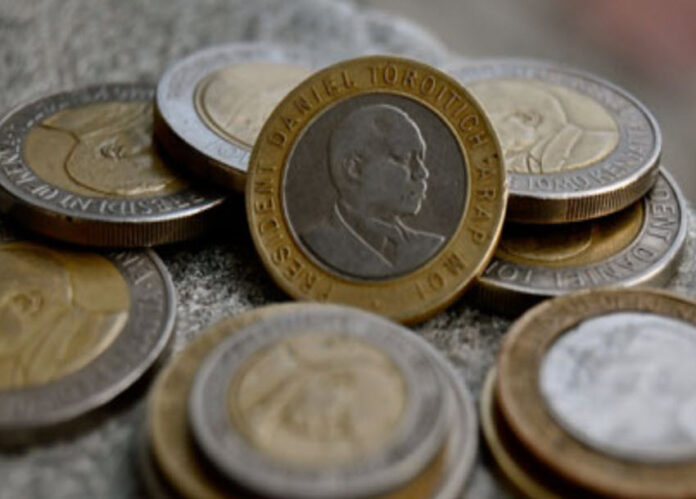Kenya Shilling Value: Kenya has been operating a managed shilling than a free float currency, running a risk of making its exports more expensive in the short run as compared to competitors, eventually causing a reduction in export earnings and the economy’s growth, a report by Amana Capital has established.
Amana’s “Kenya’s Economic Puzzle – Putting the pieces together” report highlighted that 10 years ago, the Consumer Price Index (CPI) stood at 97 but has since shot up to 192 to date meaning that the value Sh100 could buy in January 2009 can only buy 50% of that now. This translates into a 50% devaluation of the purchasing power.
Nonetheless, of interesting concern, is the shilling’s exchange rate which was at 72 in
January 2009 and currently stands at 99. This represents only 20% devaluation of the currency in the 10 year period, meaning the Kenya shilling is over valued by 30% on a purchasing power parity basis.
For more on business news, features and profiles, Bizna Kenya!
To support the above, the report argued that if according to the CPI Sh100 in 2009 can only buy goods worth Sh50 in 2019, then according to the exchange rate the same amount should afford goods worth Sh80 in 2019. Hence, this is a worrying mismatch also not supported by the balance of payments method of valuing a currency as there is only Sh500b in export earnings versus Sh2.5 trillion in import expenditure and Sh2.7 trillion in foreign debt even if you add investment flows and the questionable diaspora remittance figures.
Launching the report, Mr. Reginald Kadzutu, the Chief Investment Officer at Amana
Capital, stressed that the report aims at providing an in-depth analysis of the facts and figures for the country’s economy focusing on six key elements namely; Debt, balance of trade, employment, fiscal policy, currency and interest rates in a holistic manner.
“How these six elements blend together and the potential threats they present should not be underestimated as they impact the overall outlook of the economy,” he added.
The report argued that the country’s debt which stood at Sh5.2 trillion as of
December 2018 has changed from being a productive debt to unproductive as it is not adding to the productive capacity of the economy. It added that this will create a net burden resulting towards a sharp increase in taxation. In a span of five years, the debt structure has also changed with domestic debt standing at 54% and external at 46% in 2013 and 48% and 52% respectively in 2018.
Notably in 2018, for every Sh100 of tax collected, Sh25 went to paying interest on debt and as at June 2018, for every Sh100 in revenue, Sh34 was used to service total debt obligations.
Giving an analysis on the balance of trade, the report noted trade deficit has grown by 26% from 2013 to 2018 and it will not change direction in the near future based on the weak export structure and a weather dependent agricultural sector. As a result, pressure will persist on the Kenya shilling as imports will continue to grow, importation of grains will increase with the drought forecast and the slow death of the sugar sector will also put an increase demand on raw sugar imports. The main export tea has been dropping in price and coffee’s demand has also been on a downward trend.
In addition, the report said the main tool for directing the economy is the fiscal policy delivered through the annual budget but unfortunately the country has a lame and confused fiscal policy that does not actually provide impetus to the drivers of the economy. The two main tools of the fiscus namely taxation and spending have also been out of balance as the spending is increased at the same time with taxes which is counterproductive to stimulating the economy. Budget deficit based purely on revenue versus expenditure is an average of 34%. The continued 34% overspending and the underperforming of revenue collections will lead to future taxation increases to pay the debt used to plugging the funding gap.
Kenya Shilling Value: Lending Activity
Finally, the restrictive interest rate regime has reduced banks’ lending activity as they cannot balance the risk return trade off. Insights from the report further revealed that this has starved the private sector of the required level of credit growth to make an impact on economic growth. It stated that with private sector credit growing at 4% against the required 12%, the economic activity, tax revenue and employment will all reduce, and debt will grow more and more.
“From our analysis, the six elements are likely to lead to; reduced revenue growth, reduced employment growth, reduced export earnings, increased debt servicing commitments, increased external wealth transfer and deflating asset prices. In the long run, we foresee a drastic drop in the Kenya shilling which will be the spark that will implode the economic system,” noted Mr. Reginald.
“However, Kenya’s economy can still re-emerge from these threats if the Government cushions it by employing policy measures such as: balancing the budget gradually; reducing costs and moving to contract-based employment; diversifying the pool of products that generate export revenue; and controlling devaluation of the shilling to its true market value,” he concluded on the Kenya shilling value.








